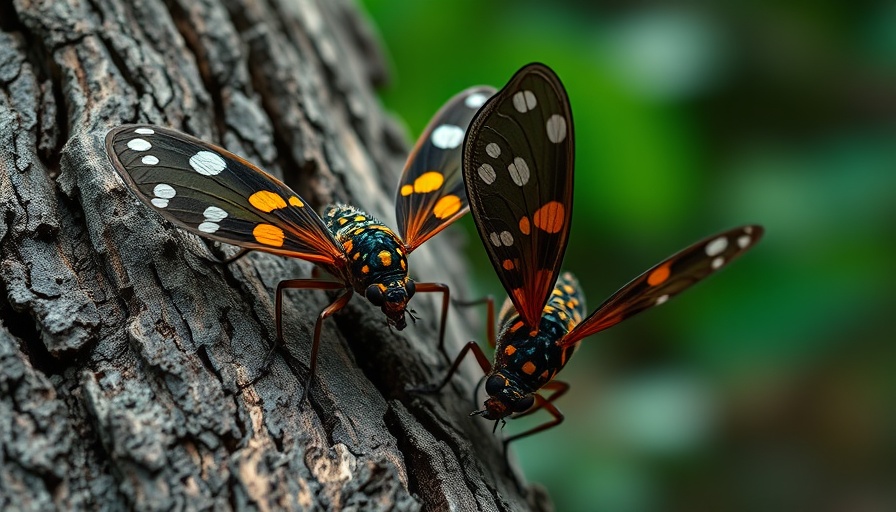
The Invasive Spread of the Spotted Lanternfly: A Growing Concern
As homeowners, we strive to create beautiful and inviting landscapes, but the emergence of the spotted lanternfly presents a unique challenge. Originally from parts of China and Vietnam, these pests were accidentally transported to the U.S. about a decade ago, and since then, they've rapidly expanded their territory.
Identification and Understanding of the Spotted Lanternfly
Spotted lanternflies, though strikingly beautiful with their colorful wings, can quickly become a nightmare for our gardens and local agriculture. An adult spotted lanternfly measures approximately one inch long and has a black head, speckled gray forewings, and bright red hindwings that are primarily concealed while at rest. Nymphs add to the confusion as they transition through various stages, from vibrant red with black dots to a more muted black with white spots.
The Critical Importance of Eradicating Spotted Lanternflies
Why should we worry about these pests? While they don’t bite or sting human beings or pets, spotted lanternflies are notorious for their destructive feeding patterns. They target hardwood trees and vital crops including grapes, apples, hops, and grains, causing severe damage. Farmer Joe Malinowski from Pest Authority emphasizes that despite quarantines, these pests act like "wildfire," which underscores the urgency of taking individual action for their removal.
What Homeowners Can Do: Action and Awareness
As responsible homeowners, we have a role to play in combatting the spread of the spotted lanternfly. Authorities recommend that we actively learn how to recognize these invasive pests and their egg masses—usually laid on smooth surfaces like trees or outdoor furniture—and engage in the practice of squishing them upon sighting. Additionally, it’s wise to avoid transporting anything that may harbor their eggs, such as lumber or other outdoor materials.
Beautiful but Destructive: The Hidden Impact
It's fascinating to consider the spotted lanternfly’s role in our ecosystem. While they might be visually striking, their unchecked spread poses substantial threats to our plant life and agriculture. By impacting crops, they can affect local economies, driving up prices for produce and labor. Amidst this botanical crisis, gaining knowledge about how to mitigate their effects can empower us to maintain our cherished gardens and landscapes.
Future Insights: What Lies Ahead for Spotted Lanternflies
Experts predict that as the climate continues to change, the conditions may become even more favorable for spotted lanternflies, potentially leading to further migrations across the U.S. states. Recognizing this evolving challenge, homeowners must remain vigilant and informed, taking proactive steps to protect our beloved plants and communities.
A Step Forward: Cooperate with Local Initiatives
Many states are implementing quarantine measures, but the fight against the spotted lanternfly goes beyond governmental actions. Homeowners are encouraged to collaborate with local agricultural agencies and community initiatives aimed at eradicating these pests. Regularly attend workshops that educate the public about the importance of pest control and sustainable gardening practices.
Your Action Matters
In conclusion, while the spotted lanternfly casts a shadow over our landscapes, we all have the ability to respond. Recognizing these pests and taking proactive measures can have a ripple effect in protecting our environment. Let’s turn awareness into action—check your gardens, join local initiatives, and spread the word. Together, we can safeguard our homes and the green spaces we cherish.
 Add Row
Add Row  Add
Add 




Write A Comment